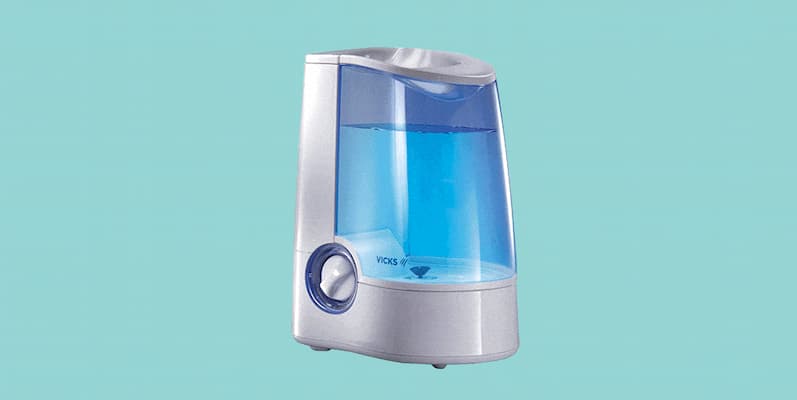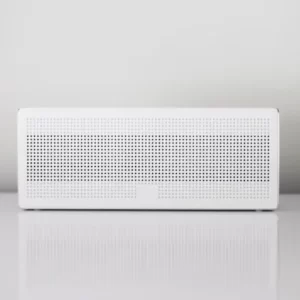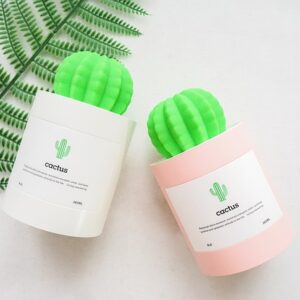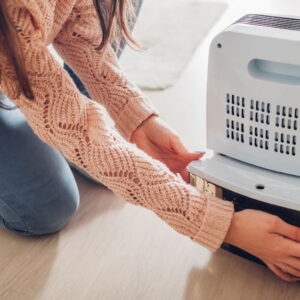Yes, humidifiers cause mold. There is more to the why and how of this, though.
Have you observed pink slime, black specks, greenish streaks, or musty, unpleasant odors in your humidifier? It could be mold.
Just like a damp basement or a wet towel, a humidifier that is not used and maintained properly can cause mold to grow in your home.
The good news is that it’s simple to keep your humidifier from turning into a mold breeding ground or mold-dispensing device. You’ll discover important advice in this article that you can use to prevent mold from out of control and from invading your home’s airspace or your lungs.
Table of Contents
What is a Mold?
A type of fungus known as a mold is made up of tiny organisms that are virtually ubiquitous. They can be any color—white, black, orange, green, or purple. Molds are an important part of nature outside, where they help the environment by decomposing dead leaves, plants, and trees.
Damp building materials can contain mold, which can be found in a variety of colors and typically takes the form of stains. Poor air quality can result from allowing mold to grow in your homes or places of business. There are some molds that can be harmful and destructive, like, Serpula lacrymans, Dry Rot Fungus, and numerous other types.
Can a Humidifier Cause Mold in Your Home?
In your home, a humidifier can lead to mold in a number of ways. Let’s take a look at the circumstances you need to be aware of in order to prevent your humidifier from encouraging mold growth.
- Overusing a Humidifier Leads to Dampness and Can Cause Mold in Your Home
Overusing a humidifier can make mold in your home have a field day since a damp environment is necessary for mold to thrive.
According to the United States Environmental Protection Agency (EPA), you should maintain an indoor relative humidity (RH) level between 30 and 50%.
Humidifiers are intended to raise the relative humidity in your home. But if the humidifier lacks a built-in humidistat, it’s simple to go overboard and occasionally exceed the advised levels. Because of this, it’s crucial to continuously check the humidity levels with a hygrometer when using a humidifier at home.
Even though summertime brings about generally higher indoor humidity levels, frequent air conditioning use can dehydrate the air and make it unhealthy. This issue is also brought on by winter heating.
When the humidity inside is below 30%, you’ll have dry eyes, itchy skin, and other unpleasant symptoms.
To avoid these situations and enhance their indoor environment, people might turn on a humidifier. The moisture levels can be easily raised if they choose a strong large room humidifier.
However, letting a humidifier run continuously at full power will release a lot of water into the air inside your home. A lot of moisture can cause walls, carpet, furniture, and floors to become wet. The relative humidity could quickly rise to 70% or higher.
When relative humidity reaches 70% or more indoors for extended periods, mold “will almost certainly grow,” according to public health experts.
- Poor Cleaning and Maintenance of a Humidifier Can Cause Mold in Your Home
Dark, humid, and warm environments are ideal for the growth of mold. This is frequently true of the interior spaces of humidifiers in operation.
This is accurate if you don’t run your filled humidifier frequently or clean it frequently. Then, the machine’s stagnant water that has been sitting there for days makes the ideal environment for microorganisms to grow.
If mold is present in your humidifier, it will eventually be released into the air of your home when the humidifier is functioning normally. You risk having your health put in danger because it will stay there.
Fortunately, there are steps you can take to reduce the possibility that your humidifier will ever experience these mold-friendly conditions.
- Mineral Scale Buildup in a Humidifier Can Cause Mold in Your Home
Many different minerals, including calcium and magnesium, can be found in tap water. If you use tap water in a humidifier, the minerals left behind in the reservoir are called scale. Note: ultrasonic humidifiers running on tap water may also leave a white mineral “dust” on surfaces in your home.
Scale buildup is the ideal environment for bacterial and mold colonies to grow because these minerals are essential for all living things to survive.

How a Humidifier Can Contribute to the Growth of Mold?
If you’re reading this article, you’re probably wondering whether or not a humidifier can cause mold. Sadly, the reply is in the affirmative. The following paragraphs will touch on this.
For instance, if it has been extremely humid and it starts to rain for a few days straight, you will start to notice mold growth in your home. Due to the moisture, you will frequently start to notice mold growing on walls, benches, and other surfaces.
A certain amount of humidity is also necessary for this fungus to flourish (mold begins to grow at humidity levels above 55%). Therefore, you shouldn’t be surprised if mold growth develops in your home or place of business on a regular basis if the moisture level there is above the required level.
However, I’ve discovered that many people who use humidifiers in their homes exceed the recommended humidity levels. This can result in an excess of moisture or wetness, which can cause mold to begin overgrowing on porous surfaces like walls, window sills, etc.
Lack of proper maintenance is another way humidifiers can result in mold growth. Most people don’t clean their humidifiers as instructed in the manufacturer’s manual because they are too lazy to do so.
If you belong to this group of slothful individuals, then kudos to you for allowing mold and other harmful microbes to thrive in your humidifier. Additionally, once mold develops inside a humidifier and you use it, it quickly contaminates the air, putting you and your family at risk.
Read about Humidifier Vs. Dehumidifier
What Causes Growth of Molds in Homes?
I will briefly discuss the prerequisites needed for this fungus to grow well before I explain what can cause or contribute to the growth of molds in your homes. The requirements are as follows:
- Moisture (e.g., water leaks, humidity)
- a food source, such as cotton, drywall, etc.
- Darkness
- Warmth (mold can’t survive freezing temperatures )
- Oxygen
- Mold spores
In addition, most molds can start to grow in as little as 24 to 48 hours, primarily under the right conditions. Additionally, you need to keep in mind that moisture is a crucial element that can encourage the growth of this harmful fungus in your homes.
Below are eight things that can cause mold in our homes and offices:
- Leaking pipes
- Humidifier
- Wet clothes
- Flooding
- Damp basement
- Leaking roofs
- Poor ventilation
- Condensation
Use Humidifier Properly to Prevent Against Mold
A humidifier can help you fight off mold and other microbes, but if you don’t use it correctly, it might have the opposite effect.
Below are ways you can use humidifiers properly:
The following directions are based on the EPA’s humidifier care and use recommendations. Mold prevention in your home when using a humidifier will be simple if you follow the advice in our guide. Your success depends on routinely performing thorough cleaning and maintenance on your humidifier.
Perform Routine Cleaning and Maintenance on Your Humidifier
A humidifier requires much more regular maintenance than simply adding water when it becomes depleted.
Prior to beginning any maintenance or cleaning procedures, make sure the humidifier is unplugged.
A good daily routine involves emptying the tank, drying all surfaces, and then refilling the water.
Every three days, thoroughly clean the tank and base of your humidifier using a powerful cleaning solution, such as distilled white vinegar (4–6% solution). Use hydrogen peroxide (3% solution) instead to help sanitize and clean if your humidifier needs a deeper clean. Note: Never mix hydrogen peroxide with vinegar. Toxic vapors are produced by the chemical reaction.
Let it soak for roughly 10 to 30 minutes while swishing the solution around. Use a clean toothbrush or a small cleaning brush to remove any debris before using the cleaning solution to wipe down the humidifier’s interior tank and base. To stop chemical vaporization into the atmosphere, rinse thoroughly with several changes of tap water. After a final rinse with distilled water, we advise letting the appliance air dry.
If your humidifier has a wick filter, maintenance is necessary on a regular basis. Some wick filters can be washed in cool water, soaked, and rinsed. Then, before reinstalling the filter in the machine, let it air dry. The filter may sustain damage if cleaning agents are used.
However, depending on how often you use the humidifier and the hardness of your water, the filter should be changed at least every three months, ideally every one to two months.
Clean and dry your humidifier whenever you’re leaving for a longer period of time or aren’t using it frequently. When you get back, dust it off and re-sanitize it before turning it on.
In the end, you should always adhere to the humidifier you have purchased’s manufacturer’s instructions when performing any maintenance.
If your humidifier develops mold, read our in-depth cleaning guide here for assistance.
Maintain Indoor Relative Humidity Levels Between 30 to 50 Percent
To stop mold spores from growing and becoming visible, set the humidistat on the humidifier to 30–50% humidity. A hygrometer can check the humidity levels in your home and validate the internal reading of your appliance. If there is a discrepancy between the two, you will know it’s time to troubleshoot.
You might need to open windows to control the humidity inside. Adjust your heating and cooling system’s settings and the use of your humidifier in a similar manner. You might need a dehumidifier to save the day when indoor humidity reaches dangerously high levels (85% or more).
Keep the Area Around the Humidifier Dry
The use of a humidifier must be monitored, and any necessary adjustments must be made, in order to prevent the visible growth of mold. An area around the machine that is too wet would never be a good thing.
Therefore, reduce the moisture output setting and direct the mist toward the middle of the room if you notice any damp carpet, floors, or walls. Alternately, use the humidifier on and off to avoid moisture. And get the towel out wherever you see moisture and start wiping it up right away.
Place the humidifier correctly to reduce the chance of having wet carpet or furniture in a bedroom. The most crucial thing is to put a humidifier on a desk, bench, or nightstand with a water-resistant tray underneath, at least three feet away from the bed and two feet up off the ground.
Use Distilled Water in the Humidifier
To prevent scale (mineral buildup) inside your humidifier, use only distilled water. Furthermore, if you do, cleaning will be simpler. There won’t be an excess of minerals that would act as a haven for mold.
Additionally, you won’t be spreading minerals on the furniture in the form of fine, white dust. Filters for humidifiers will last longer if they are filled with distilled water.
Signs Your Humidifier is Breeding Mold Spores
You can use a humidifier to add moisture to the air if you live in a region with low humidity. Humidifiers have a lot of advantages, but if they are not properly maintained, they can also produce mold spores. Here are some signs that your humidifier may be generating mold:
- You see mold or mildew on the humidifier
- There is a musty smell
- Allergies or respiratory problems have been triggered since using the humidifier
To stop the spread of mold spores, you must clean your humidifier right away if you notice any of these symptoms. Remove the humidifier from its base and wash it with warm water to clean it.
After thoroughly cleaning it, dry it before putting it back together. Your humidifier will continue to relieve the discomfort of dry air if you take good care of it.
Types of Humidifiers and How They Affect Mold Growth
There are typically two ways that humidifiers can promote the growth of mold indoors. The first is when they are left on unnecessarily, for a long time, or at excessive moisture settings, which will increase the humidity levels in the home (or room where they are installed) and then favor microbial growth, or when the standing water in the humidifiers becomes so filthy that it starts to form thin layers of scum that attract fungus like molds for feeding and breeding.
These microorganisms are then dispersed during humidification, which is the ideal circumstance for them to settle in a variety of materials throughout the home, particularly wet and damp surfaces like wet laundry cloth or damp carpets.
The first point is true for all humidifiers not operated by an automated system, and the second point is mostly exaggerated for cold mist humidifiers like ultrasonic, evaporative, and impeller types that typically have a compartment for standing water.
Because of the following, cold mist humidifiers are the worst offenders when it comes to mold growth.
They produce cold mists and release them into the air, which is a great way to release any microorganisms that have already begun to grow inside the standing water into the atmosphere. For warm mist humidifiers, they revolve around “hot” or “steam”, and that is especially useful at ridding off microbes off already contaminated water before dispersing.
That’s not to say warm mist humidifiers, like the steam vaporizers, are completely safe when it comes to preventing mold growth around the house, but it is to say that they are at least better in this regard!
Molds typically adhere to surfaces that are reminiscent of the medium they just left, which are warm, moist areas that can provide them with food to eat, when they are dispersed from contaminated standing water into the air. Examples of typical cellulose- or plant-based building materials include moist wooden walls, furniture, and cotton curtains.
Read about Can You Put Weed Oil in a Humidifier?
How Does Mold Grow?
Everywhere you look, mold can be found, usually hidden and dormant. However, under the proper conditions, mold reproduces by spores forming new colonies with threadlike filaments (hyphae) in a vast network called the mycelium.
The requirements for mold growth are:
- Moisture
- Oxygen
- Warmth
- Especially if it is a carbon source (wood, carpet, etc.), food source)
In homes, visible mold growth results from water damage:
- Flooding
- Sewage backup
- Leaks or condensation (pipes, window, vent, or roof)
- Damp basement, attic, or crawl space
- Overflows from sink, shower, or bathtub
- High humidity (potted plants, steam cooking, humidifier, dryer, showering)
What Are Health Problems Associated With Mold?
Moldy air and exposure to mold can lead to or worsen:
- Asthma
- Hay fever-type symptoms (coughing, sneezing, red eyes, runny nose)
- Skin rash
- Neurological impairment
- Cognitive and emotional dysfunction
- Dampness and mold hypersensitivity syndrome (DMHS)
The adverse health effects of mold exposure are most likely to affect elderly people, people with respiratory conditions, kids, and people with compromised immune systems.
Conclusion
Mold is a microscopic spore that, if breathed in, can be dangerous to your health. They do well in a damp environment, like the humidifier’s tank.
To stop the growth of this harmful spore, which can occasionally be unstoppable, you must give your humidifier the utmost attention during maintenance.
In order to prevent the development of mold, always make sure to maintain a constant humidity level of 30%–50%. You can benefit from your humidifier’s advantages while also safeguarding your family from potential risks if you use it properly.





